Do You Know How to Reduce?
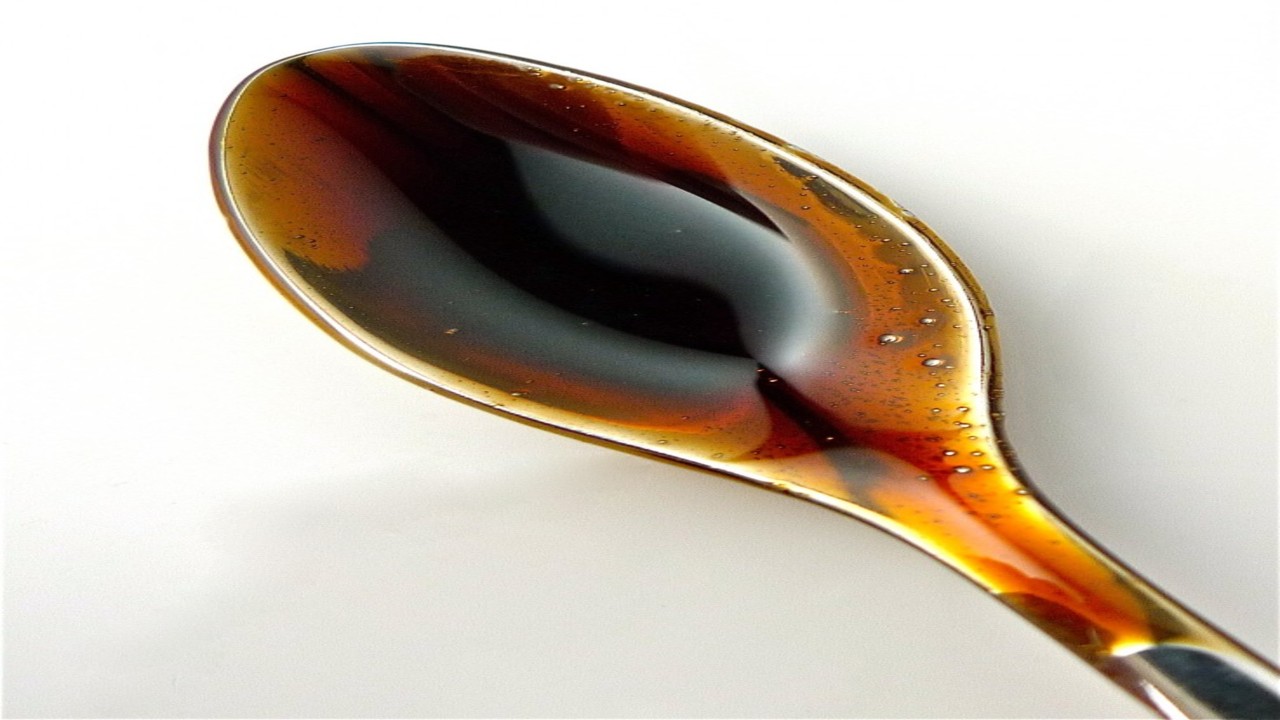
Do you know how to reduce (sauces and not any extra pounds you might be packing)? It’s one of the simplest ways to add flavor—not to mention, a more impressive presentation—to your home cooking repertoire. I’m talking about reducing braising liquid and pan drippings into lush, thick, spoon-coating sauces.
This technique is another way to take a “ho-hum” dish to a “holy cow!” dish, and it's a simple technique. So let’s talk about reducing. For cooking techniques I tend to go to one of three sources: America’s Test Kitchen experts, Martha Stewart’s cooking show, or my Bon Apetit Magazine. For this quick tutorial, let’s check out Bon Apetit.
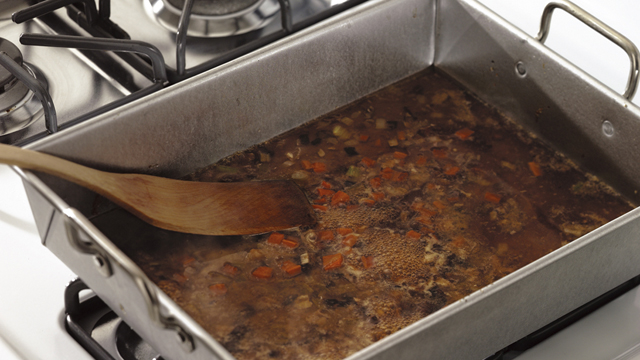
Food researcher and write, Rochelle Bilow, explains that we start with a braise. This is a heady concoction of stock, water, beer, or wine, with aromatics and a little bit of fat. You cook this “down,” meaning you let some of it evaporate. Many call the result of this technique, “GLORY in a pan!”
As the contents of your braise evaporate, the remaining liquid becomes a thickened concentration. But Rochelle cautions that mastering the art of reducing pan drippings requires a little savvyness. The best reductions are thick enough so that a line drawn on the back of a spoon with your finger holds, without dripping (the fancy French word for that is nappant).
So with this explanation about what reducing is all about, here are her tips on how to turn your simple pan drippings into a flavor complex that’s delicious, silky, and spoonable:
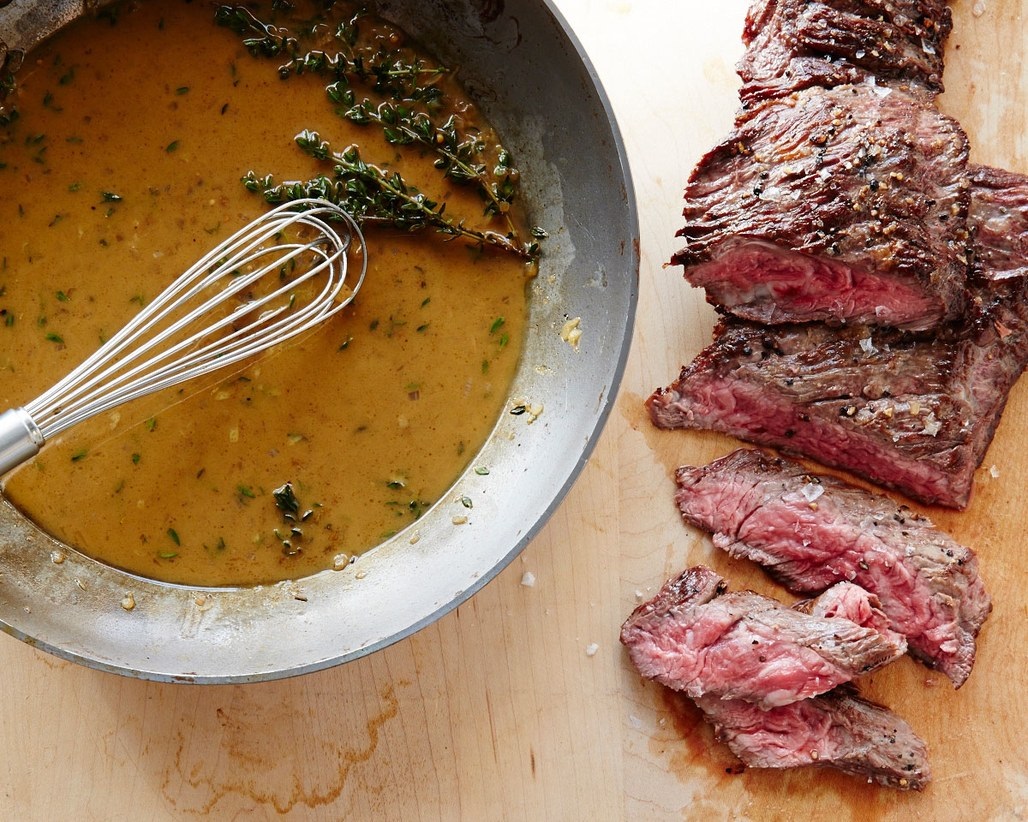
1. Remove the meat. Remove your fully-cooked and tender meat from the pan and let it “rest” while you cook the sauce over medium heat. Once the sauce has reached your desired consistency, add the meat back in and rewarm it over gentle heat, spooning the sauce over.
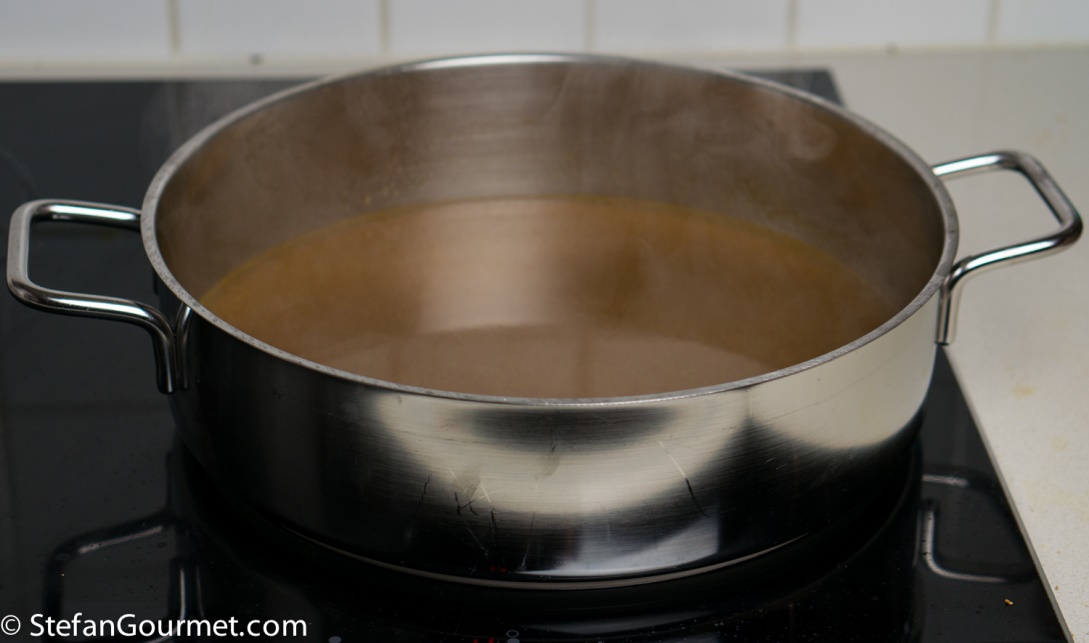
2. Reduce in a wide-bottomed pan. The more surface area your sauce has to do its thing, the quicker it'll reduce. A large Dutch oven or wide sauté pan will yield the quickest results. Can you reduce in a small sauce pot? Of course, but know that the deeper the pan's volume, the longer it'll take the sauce to condense and reduce.
3. Divide and Conquer. If you're in a hurry, you can really speed up the process by dividing the sauce into two pans (for maximum effect, see point no. 2 and use two wide pans). If you have a lot of liquid to begin with, as in the example of a large batch of braised short ribs, you can just discard a bit of it before you begin reducing.
4. Remove the lid. Because the method of reducing liquid is to let it evaporate, you're going to want to give that liquid access to the air. So keep the pot uncovered.

5. Give It Time. A good reduction takes a fair amount of time, and it's ideal to simmer, rather than boil. Too-high heat can cause the sauce to over-reduce and/or become bitter. For most standard-sized braises, expect to invest anywhere from 15 to 30 minutes.
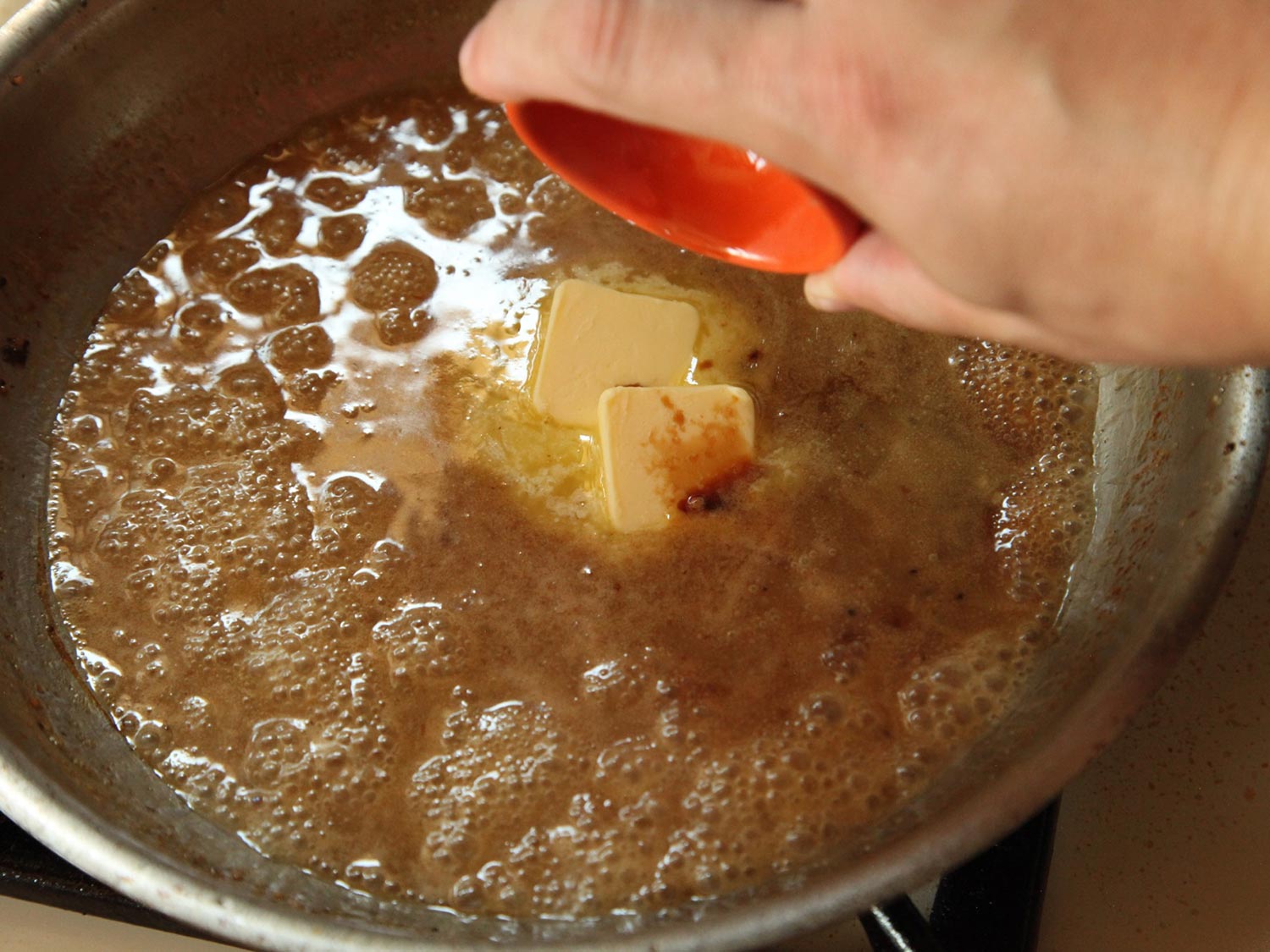
6. Add butter. Once your liquid has reduced to the perfect consistency (remember that back-of-the-spoon trick), whisk in a tablespoon or two of room-temperature butter. The butter will add a little extra thickness and give it a beautifully glossy sheen. But don't add it until the sauce is finished: Simmering the butter can cause it to separate and the sauce to "break."
7. In a Pinch, Cheat. If you've dutifully followed steps one through six and your sauce still hasn't properly reduced (need we direct you back to no. 5?), you can fix this with a slurry. A slurry is simply a combination of starch mixed with liquid. Some classic slurries include: cornstarch, arrowroot, potato starch, combined with water or stock. Be careful not to add too much, though, or you’ll turn your reduction sauce into a gravy.
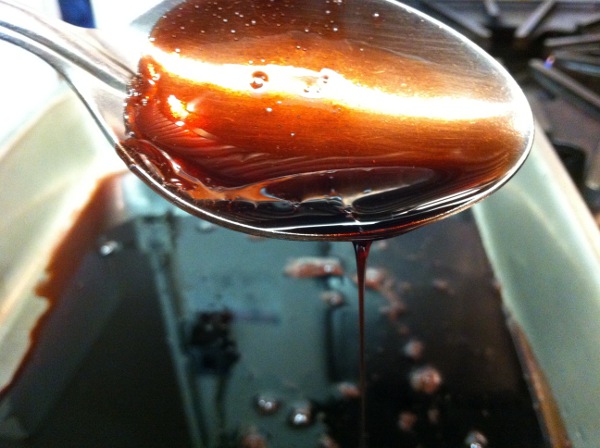
Let’s all try our hand at this reduction technique this weekend and report in. Meanwhile, bon apetit and success with your reducing!
- www.rouxbe.com
- www.scout.com
- www.bonapetit.com
- www.stefangourmet.com
- www.keepcalm-o-matic.co.uk
- www.seriouseats.com
- www.thesportinggentry.com
 Alice Osborne
Alice Osborne
Weekly Newsletter Contributor since 2006
Email the author! alice@dvo.com
